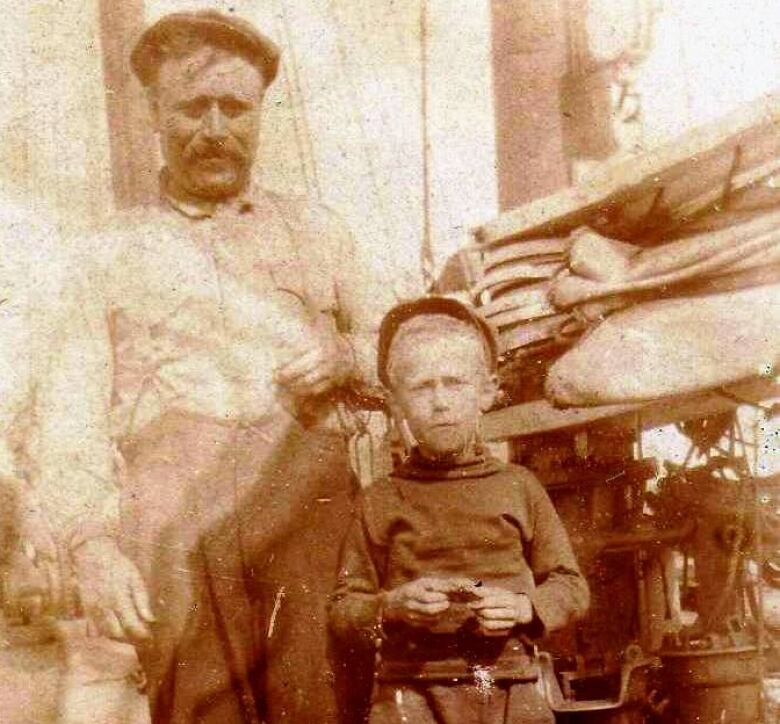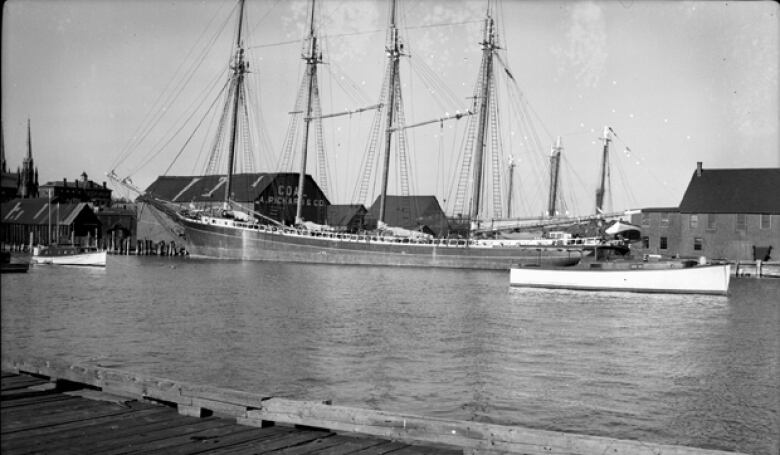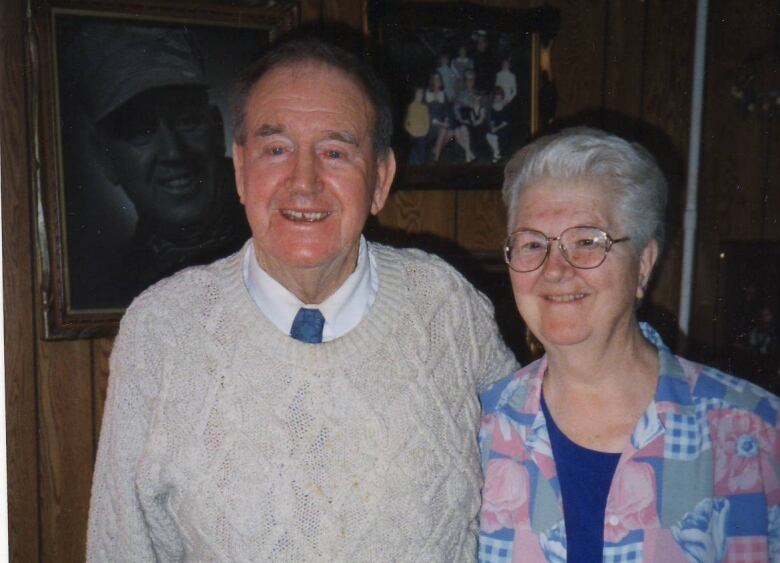They heated with coal in P.E.I.'s Bygone Days
Coal from Springhill, N.S., was said to be the best for steam-engine trains

Reginald (Dutch)Thompson's column The Bygone Days brings you the voices of Island seniors, many of whom are now long-departed. Thesetales of the way things used to be offer a fascinating glimpse into the past. Every fewweekends, CBC P.E.I. will bring you one of Dutch's columns.
As oil heat falls out of fashionfor polluting the environment and heating with wood falls out of fashion for all the back-breaking work involved, more Islanders are turning to electricity,powered in part by wind or solar.
But did you know many homes and businesses were heated with coal in Prince Edward Island's bygone days?
The black rocks were shipped to the Island on wooden schooners from Cape Breton Island, Pictou and Springhill, N.S., as well as Minto, N.B.
Coal was plentiful and relatively cheap. Every fall, ships from P.E.I. were filled with potatoes and turnips, and sailed across the Northumberland Strait.

Gus Gregory was born in Chepstow, near Souris, in 1918. He spent his life on the sea, fishing and working on East Coast wharfs.
"And the first wharf that was put in Souris was built by the MacDonalds down at Nora's Pond. Now this here Neil MacDonald they call them the Joe Neils there yet they built the first little wharf. They call it Babineau's Wharf today, it was MacLean-Knight's wharf (the Knights bought it from the Joe Neils, and MacLeans bought it from Knights)," Gregory said.
"And they had it so a vessel could come in and tie up and they'd take the dump-cart of potatoes and dump it aboard the vessel blue potatoes, they dumped them right aboard loose. And those vessels took poultry and pork and beef to St. Pierre, down to Newfoundland and Labrador and those places."
They'd stop off in Nova Scotia on the way home and load up the ships with coal, Gregory said.

Capt. Tom Trenholm was one of the last old-time sea captains in the Maritimes when Dutch Thompson interviewed him decades ago.Trenholm was raised on his father's schooners at night his mother taught him school, and by day he learned from his father how to read the wind and chart a course using a sextant.
They sailed 500- and 600-tonne schooners including the Marine and the M.M. Gardiner up and down the Atlantic Ocean, from Charlottetown and Louisbourg, N.S., to South America and Barbados.
Trenholm was master of his own vessel by the time he was 17 years old. He sailed the schooner Nellie Dixon around the Maritimes in the 1940s.
"[I'd] bring up coal from Cape Breton, Sydney this is what brought me to the Island away from Louisbourg," he said. "I used to load at Sydney and come up through the Bras d'Or lakes most of the time then Charlottetown or Georgetown then potatoes back again."

Trenholmsaid in the 1920s and '30s it was hard to find men to work aboardthe schooners since the pay for deckhands was only $20 a month (that's 66 cents per day), and most able-bodied men could get a better-paying job in the army or navy. Watersinfested with German U-boats made the job even more dangerous.
Walter Lord sailed out of Victoria-by-the-Sea as first mate aboard the Trenholms' schooners, and he and the ship's cook made $25 a month.
Capt. Tom wasn't getting rich, though: he made just $4 a tonne for hauling the coal.
Horses kept underground
John Wilson was born into a coal-mining family inPictou, N.S.: his grandfather, father and brother all worked in the mines. His father was killed when John was nine years old, and John quit school to apprentice as a baker. When he was 12 years old, he was making $9 a week and had picked up the nickname Cookie John.

Cookie John loved to cook, and he also loved the great outdoors,so he spent 12 years cooking and baking in lumber camps and sawmills in the Nova Scotia backwoods.
While he was cooking he met his wife, who was working in a lobster factory in Caribou. By 1940 they were married and moved back home in Westville, N.S., where he began the job he'd been avoiding all this life working in the coal mines. At the Acadia mine, he said he'd load 22 tonnes of coala day for $3.50.
"I was just a loader. Idrove horses in the pit too ... got my ribs all busted in there, my head busted and banged up. I'm a wreck!" Wilsonsaid. He recalled feeding the horses oats and bringing them fresh water, as well as apples for a treat.

"I used to talk to my horse. They knew everything I said," Wilson said. He said the horses were stabled underground, and wouldn't see daylight "for years and years."
The Pictou County coal fields are notable for two reasons: the huge seams of coal, and the methane gas that caused explosions underground. Cookie John said he lost many good friends, both horse and human, down in the coal pits, including his younger brother Dave.
An underground disaster at the Westray mine in 1992 that killed 26 men finally ended underground coal mining in the Pictou area.
'Give me some of that Springhill!'
For 75 years the trains on P.E.I. ran on coal from Springhill, N.S.

The man who fired a train's big steam engines was called the fireman, and Charlie Deighan from Summerside was one of them. He was a railway man, like his father Ernie Deighan.
Both men drove steam engines back when the Springhill coal mines were in full production.
"They liked the Springhill coal, that was the hottest coal," Deighan said. "There was other coals from New Brunswick and Nova Scotia, you know, but they knew the good coal. If there was a Springhill car in 'Give me some of that Springhill!' That was the best coal."
Aseries of disasters in the 1950s put a stop tocoalmining in Springhill.
Coalmining has all but ended in Atlantic Canada except for a couple of open-pit mines in Nova Scotia that produce coal to generate electric power, according to the province's Museum of Industry.












_(720p).jpg)


 OFFICIAL HD MUSIC VIDEO.jpg)
.jpg)



























































































